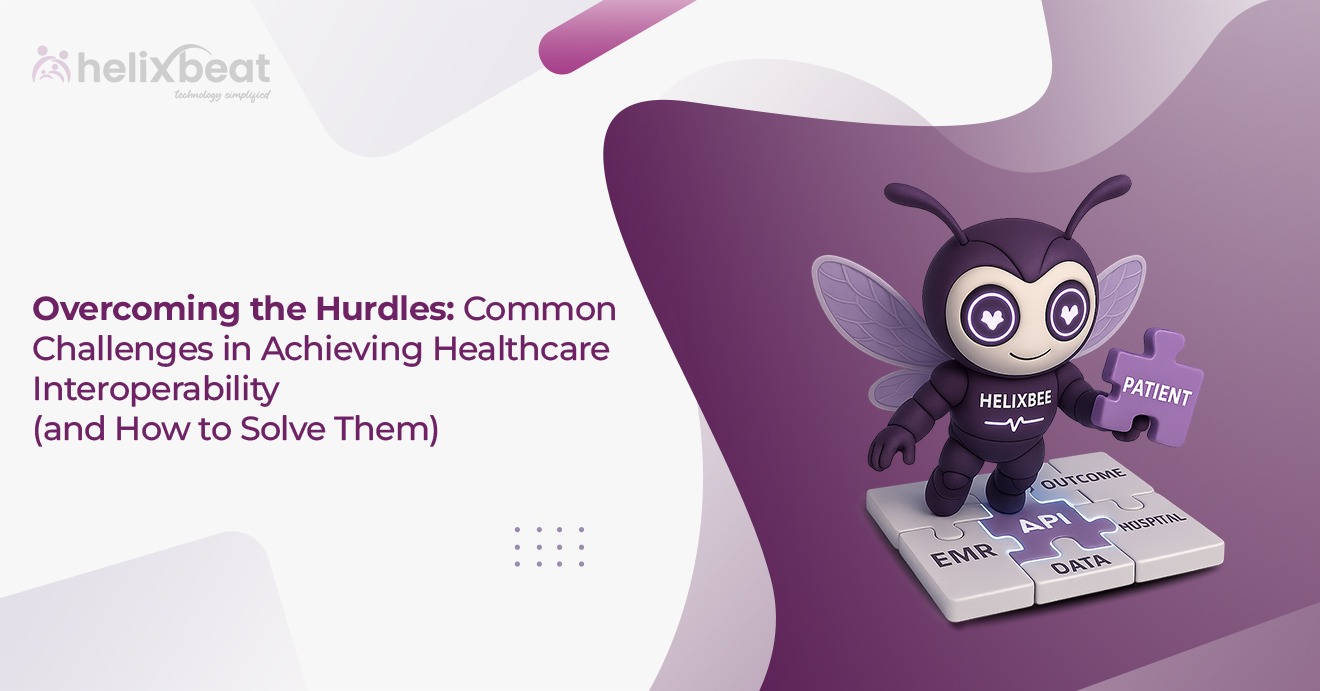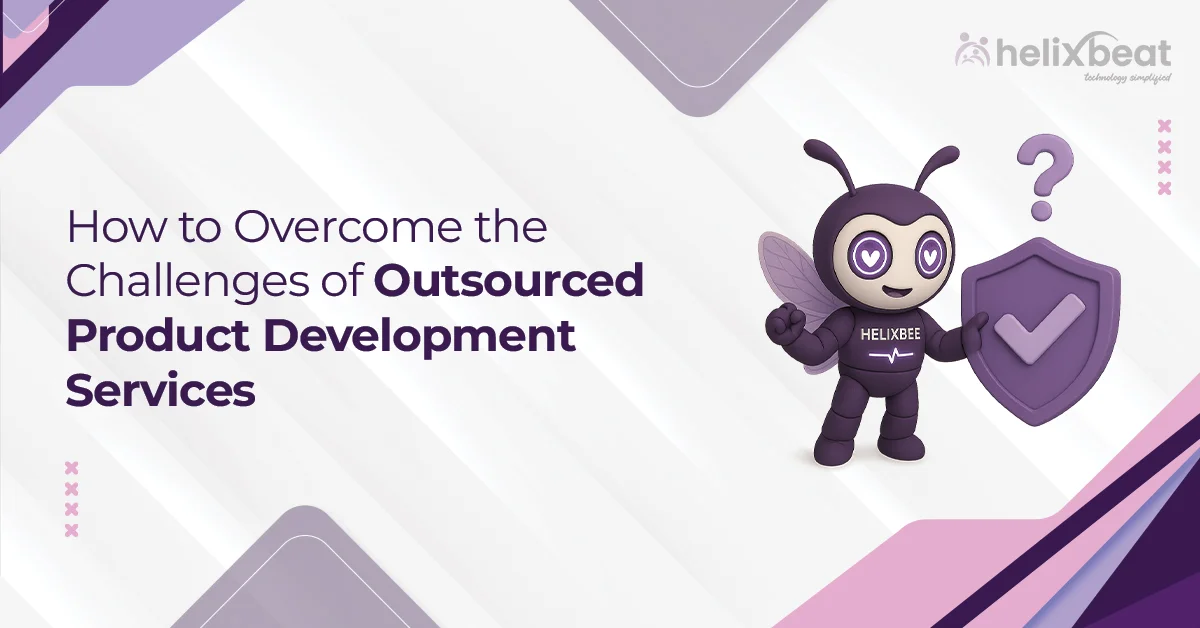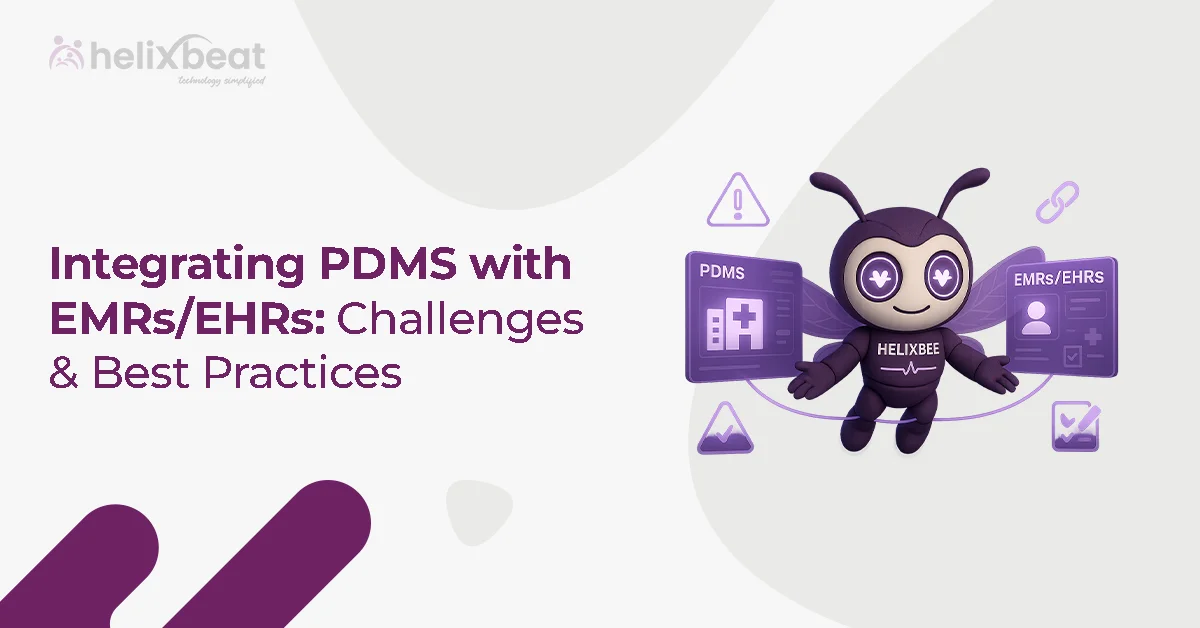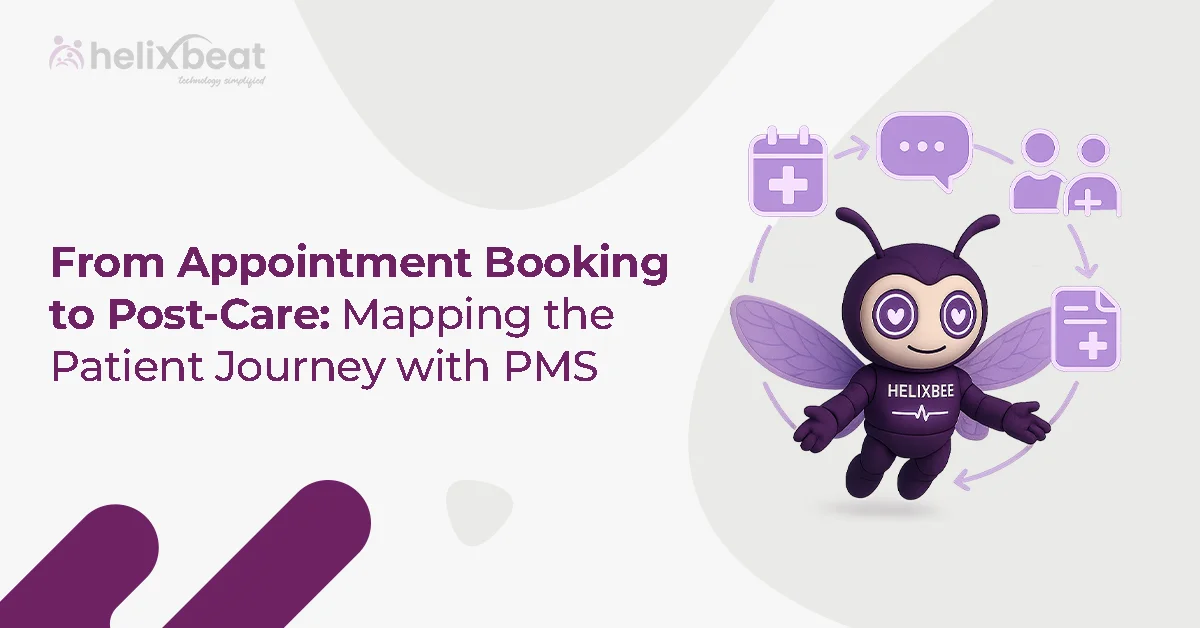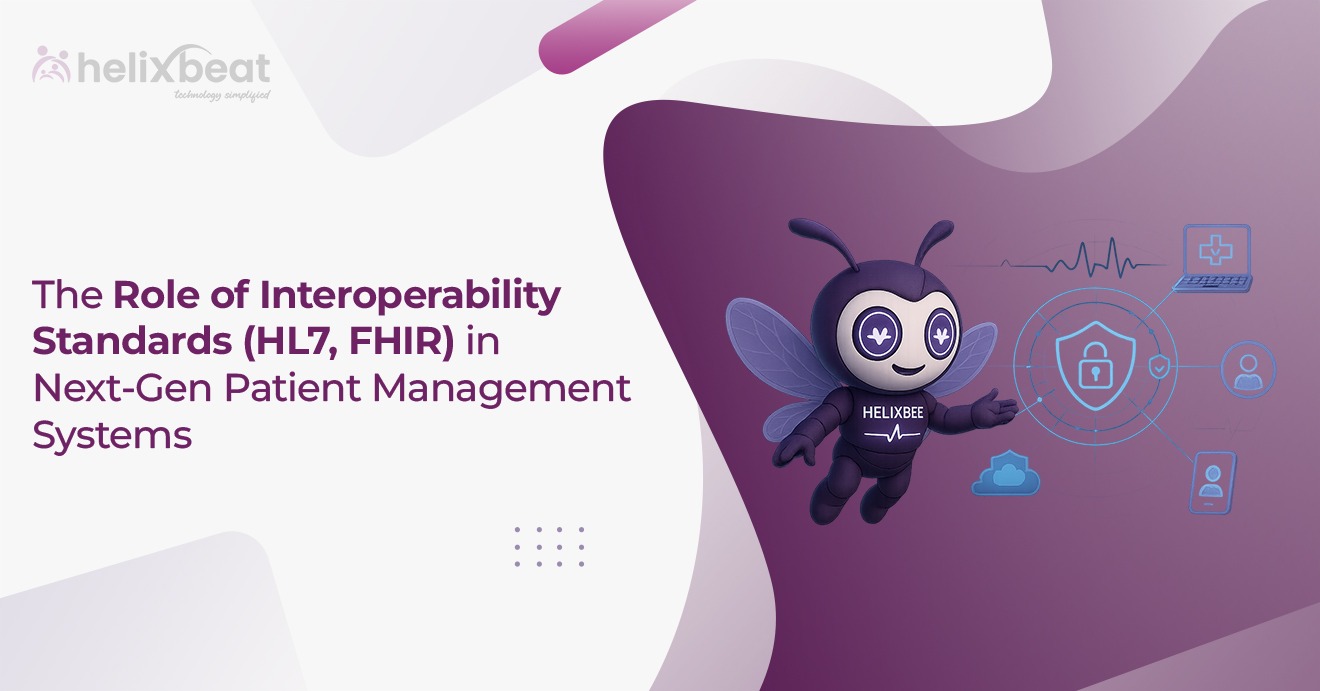As healthcare rapidly evolves, interoperability is proving vital for better patient care, greater operational efficiency, and sharper data-driven decisions. However, making healthcare systems seamlessly interoperable has proven difficult. Many organizations face technical, organizational, and regulatory challenges that can hinder progress.
In this blog, we’ll discuss the common obstacles healthcare organizations encounter in the journey toward interoperability and explore strategies to overcome them, all while highlighting the importance of healthcare interoperability solutions like AERIS.

Table of Contents
What is Healthcare Interoperability?
At its core, interoperability in healthcare refers to the ability of different systems, devices, and applications to communicate and exchange data seamlessly. This data exchange should be accurate, timely, and accessible across various stakeholders in the healthcare ecosystem, including doctors, nurses, pharmacists, patients, and administrative staff.
Effective healthcare interoperability results in better patient outcomes, reduced medical errors, streamlined operations, and improved coordination among healthcare providers.
Key Challenges in Achieving Healthcare Interoperability
1. Data Silos Across Healthcare Systems
One of the key hurdles in healthcare interoperability is the presence of data silos. Healthcare data is often fragmented and stored in different formats across various systems. For example, a patient’s medical records may reside in multiple systems—electronic health records (EHRs), laboratory systems, pharmacy databases, and imaging systems. Each of these systems may use different standards, protocols, and data formats, making it difficult to consolidate and share the information across platforms.
To address this, organizations should adopt healthcare interoperability solutions like AERIS that support data standardization. AERIS supports Health Level Seven (HL7) and Fast Healthcare Interoperability Resources (FHIR) that facilitate data sharing across disparate platforms.
2. Lack of Standardized Data Formats
Despite the adoption of international standards like HL7, many healthcare providers continue to use different, non-standardized data formats. The inconsistency in data formats can cause issues with interpreting and processing patient information. For example, a healthcare provider in one region may use a specific coding system for diagnoses, while another healthcare provider may use a different system, making it hard to interpret medical records across borders.
However, FHIR, a more modern standard, is gaining traction as it offers a flexible, standardized approach to data sharing. By adopting healthcare interoperability solutions like AERIS, which supports FHIR, healthcare organizations can facilitate smoother data exchanges that are consistent, standardized, and easily understood across various systems.
3. Security and Privacy Concerns
The healthcare industry is subject to strict regulations around patient privacy and data security. With the sensitive nature of health data, concerns about unauthorized access, data breaches, and compliance with laws such as the Health Insurance Portability and Accountability Act (HIPAA) in the U.S. make interoperability a tricky process. Therefore, healthcare organizations may be hesitant to share patient data due to fears of security vulnerabilities.
Healthcare interoperability solutions like AERIS have robust cybersecurity measures, such as end-to-end encryption and other secure authentication protocols, to mitigate these concerns. By using trusted platforms that comply with regulatory standards, healthcare organizations can safely share data without compromising patient privacy.
4. Legacy Systems and Technology Infrastructure
Many healthcare providers still rely on outdated legacy systems that were not designed with interoperability in mind. These legacy systems lack the capabilities to communicate with modern systems or provide data in formats that are compatible with newer technologies.
Healthcare interoperability solutions like AERIS bridge this gap between legacy systems and new solutions. The platform acts as a translator, converting data from older formats into a format compatible with newer, interoperable systems.
5. Fragmented Regulations and Legal Barriers
Healthcare interoperability efforts often face roadblocks due to varying regulations in different regions. Laws around data ownership, access, and privacy differ from country to country, making it difficult to achieve a global standard for interoperability. In some cases, legal restrictions prevent data from being shared across state or national borders, hindering efforts to build a connected healthcare ecosystem.
To overcome regulatory barriers, healthcare providers must stay up-to-date on local, regional, and international regulations governing healthcare data sharing. Collaborating with regulatory bodies and engaging in cross-border data-sharing initiatives can help facilitate a smoother interoperability process. Moreover, adopting healthcare interoperability solutions that comply with global standards can help organizations stay compliant while exchanging data across borders.
7. Resistance to Change and Organizational Culture
Achieving interoperability is not just about technology—it’s also about changing organizational behavior. Healthcare professionals, administrators, and IT staff may be resistant to adopting new technologies due to concerns about workflow disruptions, lack of familiarity with new systems, or fears of increased workloads. This resistance to change can hinder the adoption of interoperability solutions.
Therefore, successful adoption of healthcare interoperability solutions requires a shift in organizational culture. Leadership should encourage a culture of innovation and collaboration, promoting the benefits of interoperability and engaging staff in the process. Providing adequate training, clear communication, and a user-friendly interface for staff can help ease the transition and encourage buy-in from all levels of the organization.
How AERIS Improves Patient Care
Healthcare interoperability solutions like AERIS can have a significant positive impact on patient care. Some of the key benefits include:
- Improved Patient Outcomes: With real-time access to comprehensive patient records, healthcare providers can make more informed decisions, leading to more accurate diagnoses and effective treatment plans.
- Reduced Medical Errors: By eliminating the need for manual data entry and reducing duplicate tests, interoperability reduces the risk of medical errors caused by incomplete or inaccurate information.
- Enhanced Patient Experience: Patients benefit from seamless care coordination between specialists, faster appointments, and more accurate prescriptions and treatment plans.
- Increased Efficiency: Healthcare providers can spend less time on administrative tasks and more time providing quality care, improving the overall efficiency of the healthcare system.
Final Thoughts
The path to achieving healthcare interoperability is fraught with challenges, from data silos and a lack of standardization to regulatory complexities and financial constraints. However, with the right approach and healthcare interoperability solutions like AERIS, providers can overcome these obstacles.
If your organization is looking to improve its interoperability capabilities, consider partnering with Helixbeat. With our cutting-edge healthcare interoperability solutions, we can help you identify the best strategies to enhance data sharing, streamline operations, and transform patient care. Reach out to us today!
FAQs
- How do healthcare interoperability solutions improve patient care?
By enabling seamless data exchange between healthcare providers, healthcare interoperability solutions make patient records accessible and accurate across various platforms.
- What are the main benefits of implementing healthcare interoperability solutions?
The main benefits include enhanced care coordination, reduced medical errors, faster patient data access, improved patient outcomes, and increased operational efficiency. These solutions simplify workflows and enable healthcare providers to focus more on patient care.
- How do healthcare interoperability solutions handle data privacy and security?
AERIS implements robust encryption methods, secure data transmission protocols, and compliance with healthcare regulations like HIPAA to protect patient data. Security measures are critical to maintain trust and confidentiality when sharing health information.
- Can healthcare interoperability solutions be integrated with legacy systems?
Yes, AERIS is designed to integrate with legacy systems, allowing healthcare organizations to continue using older platforms while gradually transitioning to newer, more interoperable technologies.
- How do healthcare interoperability solutions help reduce operational costs?
By streamlining data exchange and automating processes, healthcare interoperability solutions reduce the time spent on administrative tasks, cut down on duplicate tests and procedures, and optimize resource allocation. This leads to cost savings and more efficient operations.



